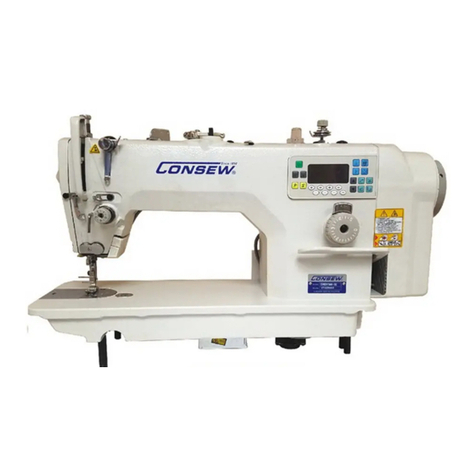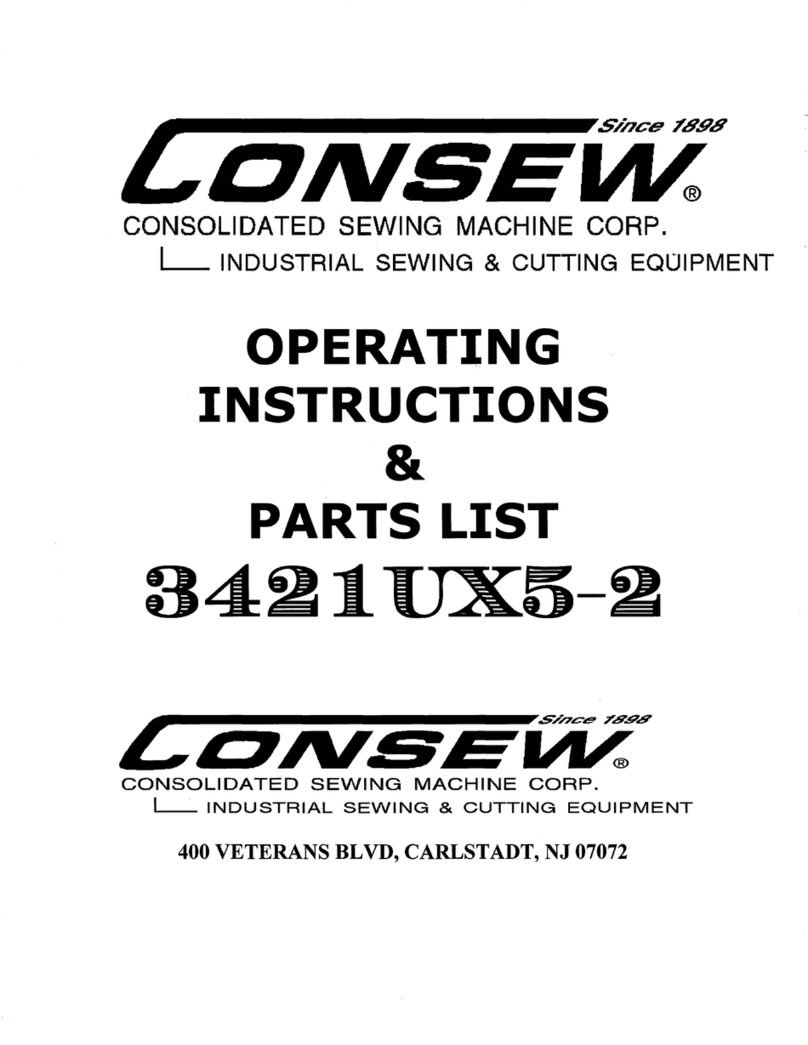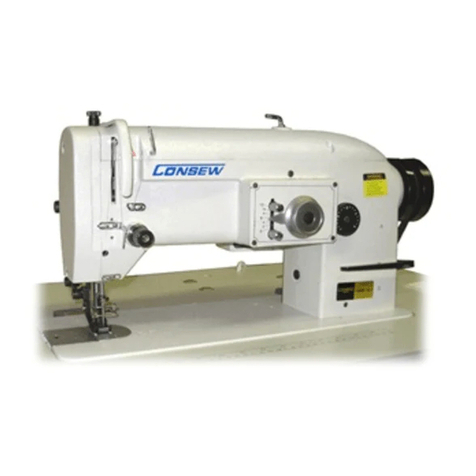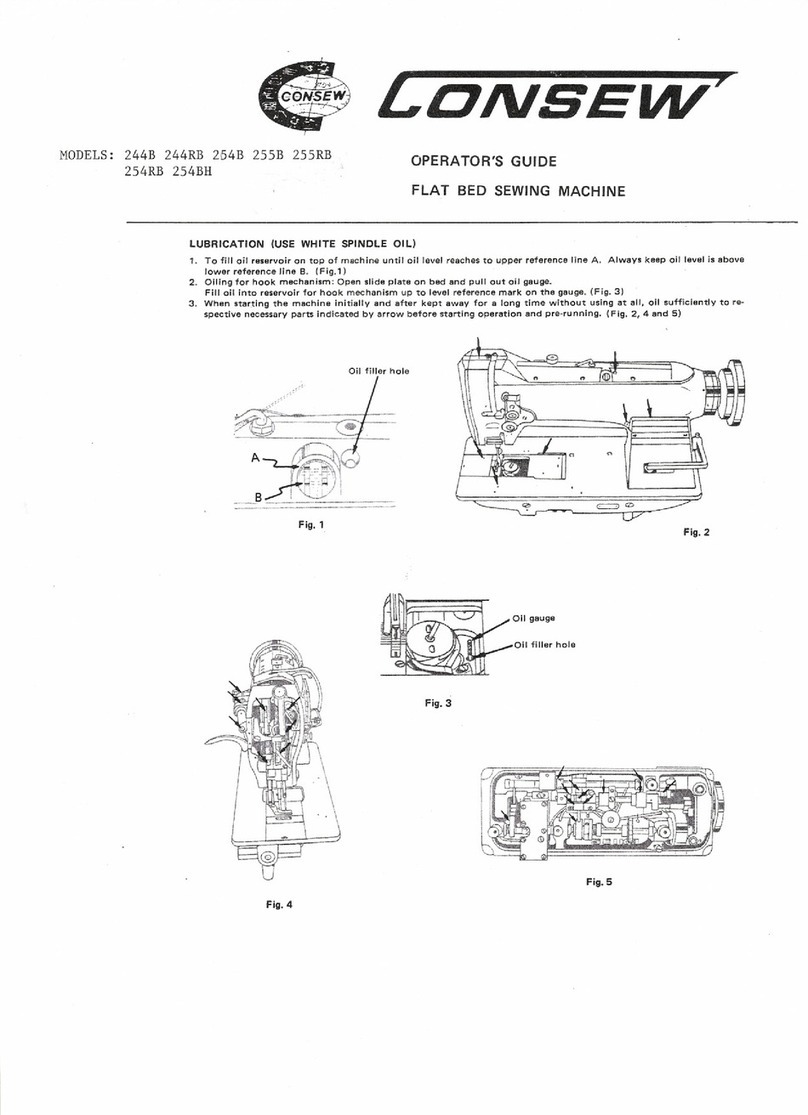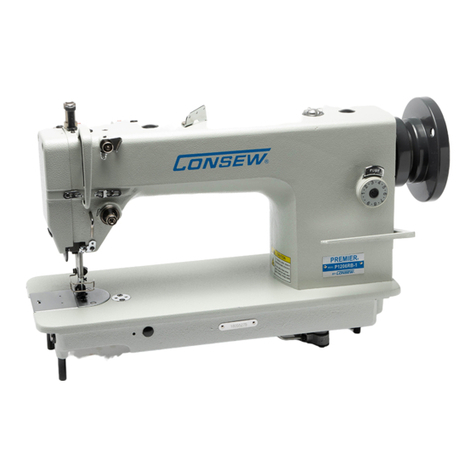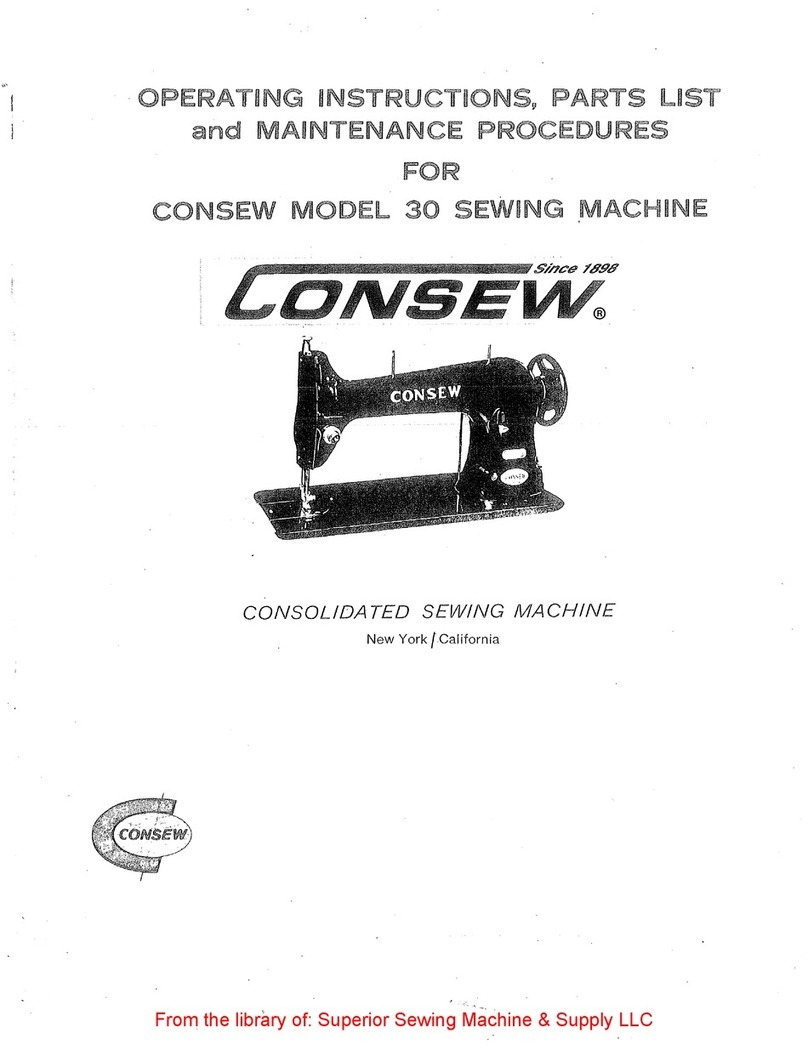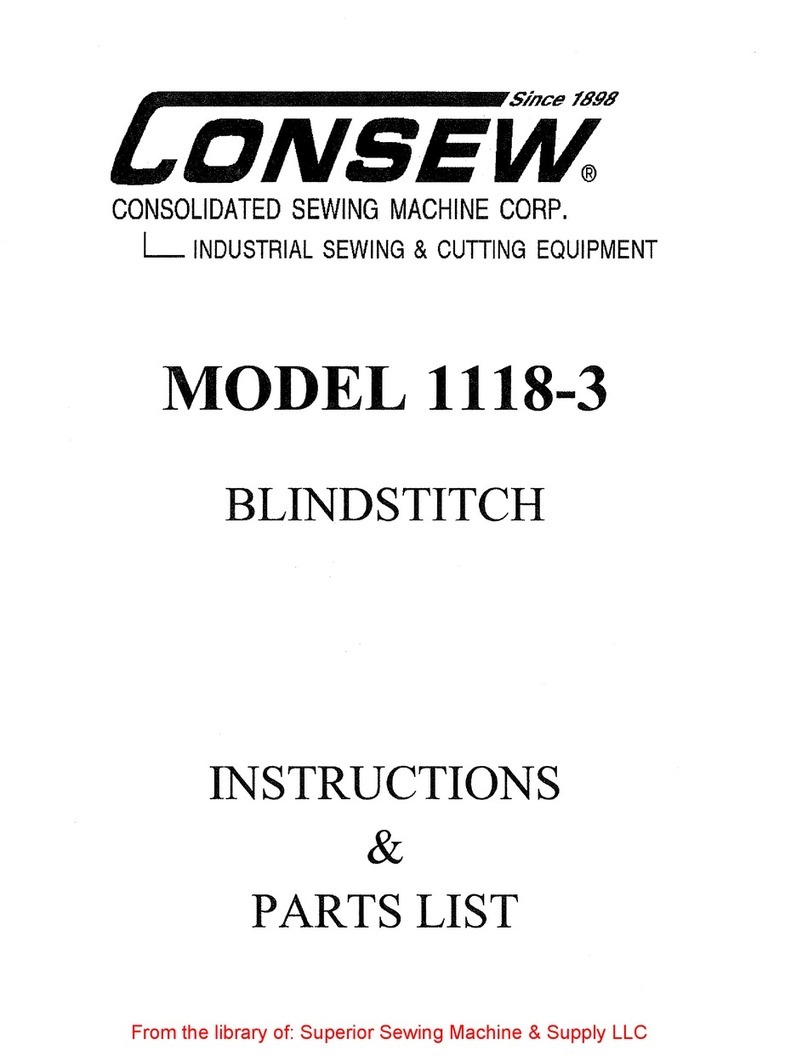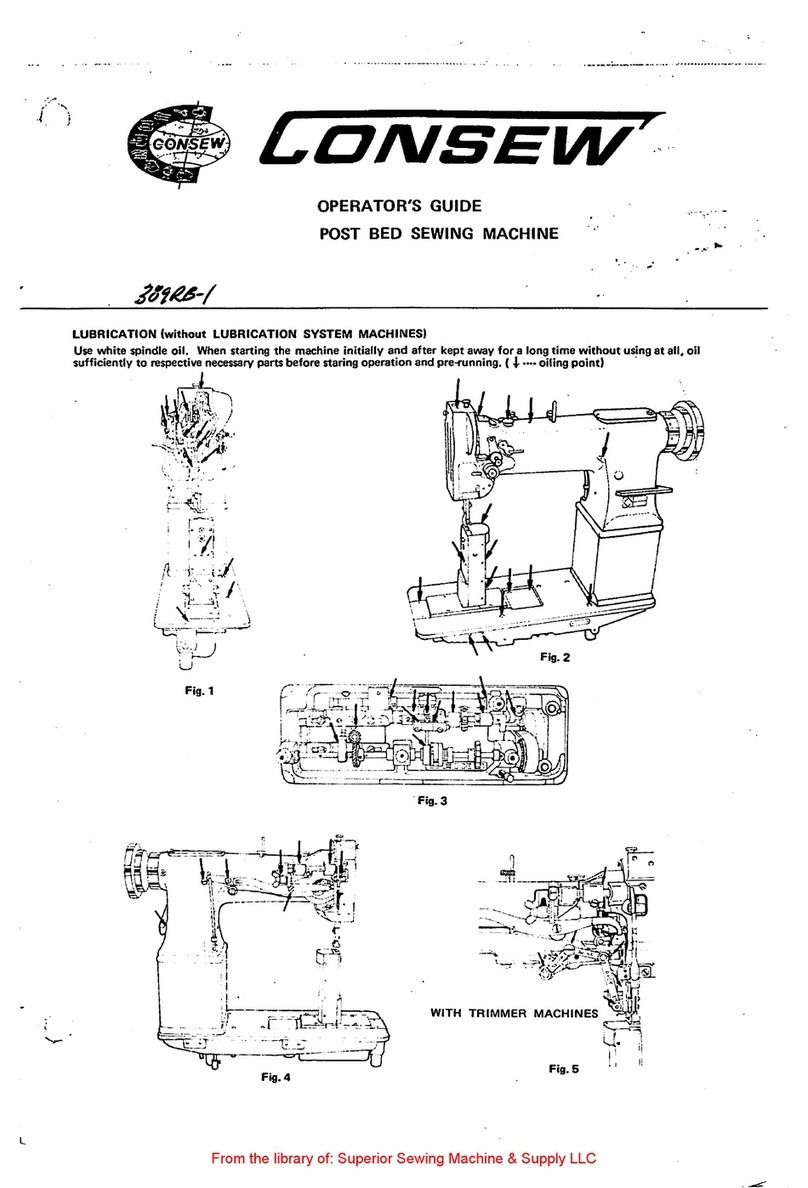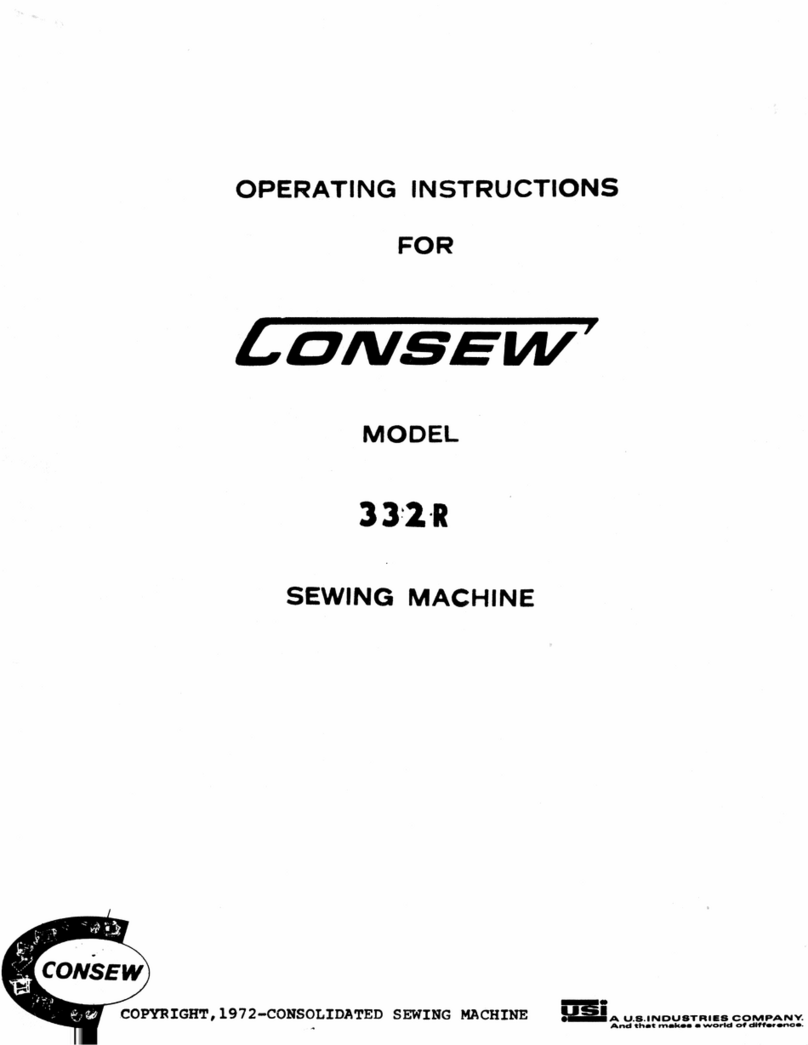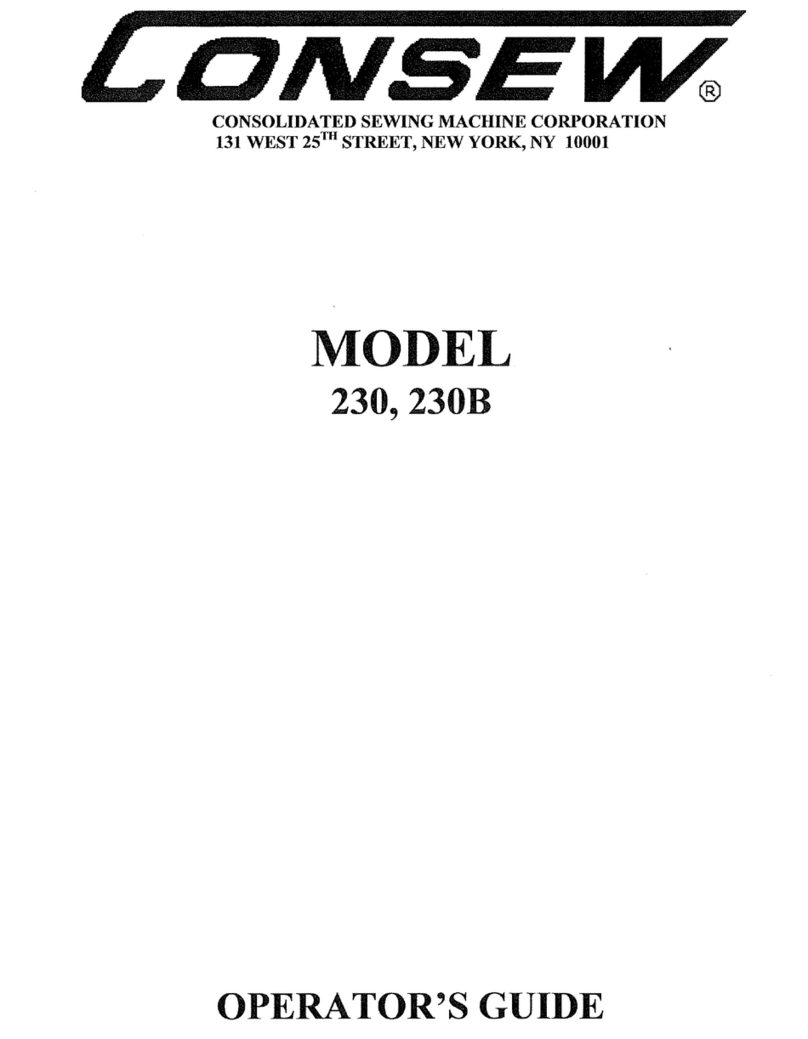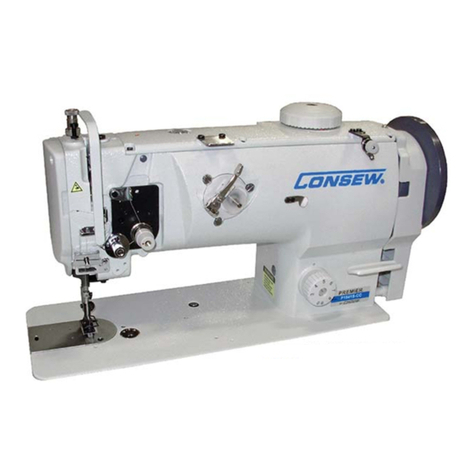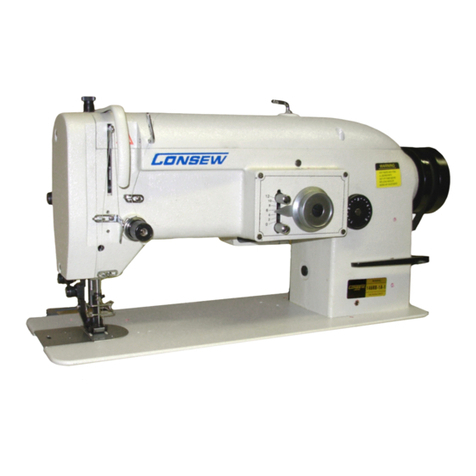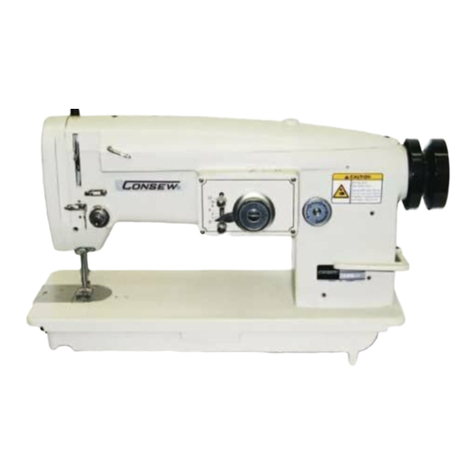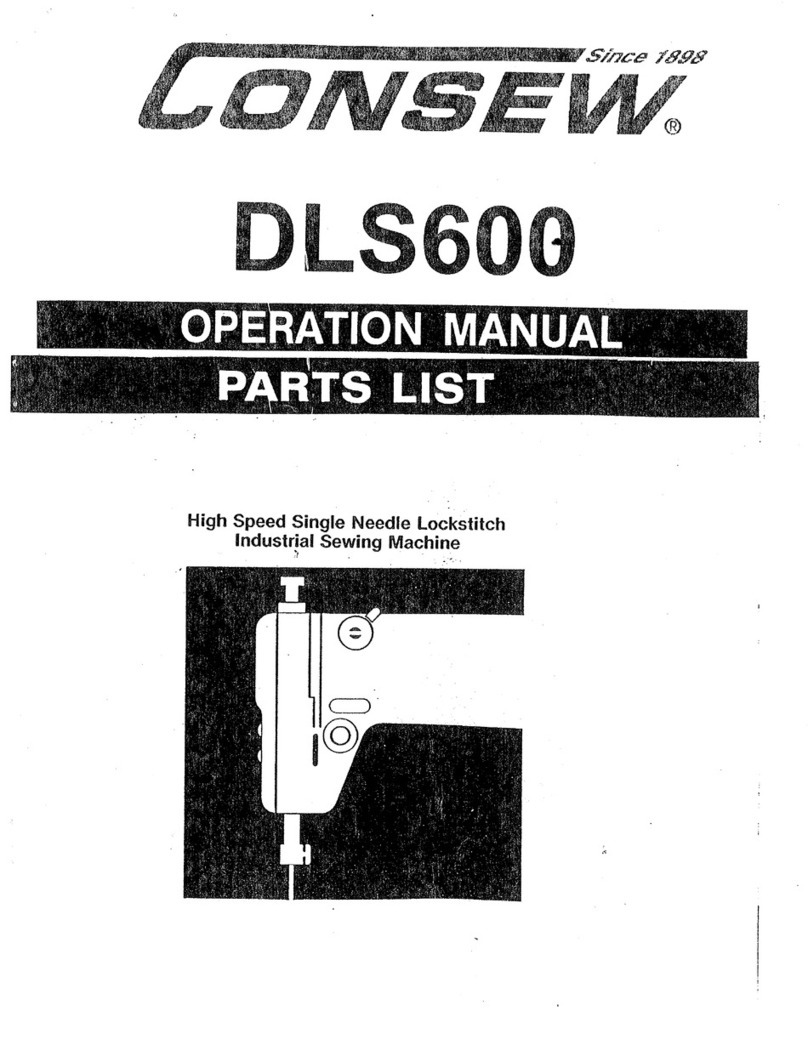
\.
knob
"K''
i,Fig.
4)
clockwise
for
~
penetration
and
counterclockwise
for
less penetration.
The
dial
surrounding
the
adjustment
knob
shows
clearly
the
direction of
turning
to
obtain
.the
needed
degree
of
needle
penetration.
If
the
needle
should
fail to
catch
the
fabric,
turn
the
adjustment
knob
gradually -notch by notch- in clockwise
direction
as
stated
above.
On
the
other
,,
hand, if
the
penetration
should
be
too
great,
and
too
much
of
an
impression
'-
should
show
on
the
right
side
of
the
material,
turn
adjustment
knob
to
the
left (counterclockwise) until
the
stitching is as desired.
9.
Removal
of
the
Work
from
the
Machine
Stop
machine
and
turn
handwheel
away
from
operator
until needle ·
completely
out
of
the
material.
Press
the
knee lifter to
the
right
and
pull
the
\vorkpiece
rearward
out
of
the
machine
with a
quick
stroke.
This
will
lock
the
last stitch
and
break
the
thread.
10.
The Skip
Stitch
Device
The
position of
skip stitch device. lever
"L''
at
the
right
side of
the
machine
controls
the
\Vhen
this
lev-
er
points
toward
the
operator,
as
shown
in Fig.
4,
the
needle
catches
the
material
at
each
stitch.
Pushing
lev-
er
"L"
to
the
rear
of
the
machine
so
that
it
points
toward
the
hand-
\\·heel will activate
the
skip-stitch de-
vice
whereby
the
needle will pene-
trate
the
material
at every
other
stitch.
\'-
/
/B
/
_......._
____
_
Fig.
4
L
/
Be
sure
that
lever
"L"
is
pushed
completely
in
either
direction
and
needle
penetration
readjustf!d every time
operation
is
changed
from
skip
to
nonskip
11.
Needle
and
Thread
Recommendations
Standard
type blindstitch
machine
needles
sizes 29-493
through
29-494-1/2
are
the
only
ones
to
be
used
for
Consew
Blindstitch
Machine
Model
222.
For
best results,
use
only
CONSEW
needles.
4
From the library of: Superior Sewing Machine & Supply LLC
